During classical antiquity, Albania was home to several Illyrian tribes such as the Ardiaei, Albanoi, Amantini, Enchele, Taulantii and many others, but also Thracian and Greek tribes, as well as several Greek colonies established on the Illyrian coast. In the 3rd century BC, the area was annexed by Rome and became part of the Roman provinces of Dalmatia, Macedonia and Moesia Superior. Afterwards, the territory remained under Roman and Byzantine control until the Slavic migrations of the 7th century. It was integrated into the Bulgarian Empire in the 9th century.

Korçë is the eighth most populous city of the Republic of Albania and the seat of Korçë County and Korçë Municipality. The total population is 75,994, in a total area of 806 km2 (311 sq mi). It stands on a plateau some 850 m (2,789 ft) above sea level, surrounded by the Morava Mountains.
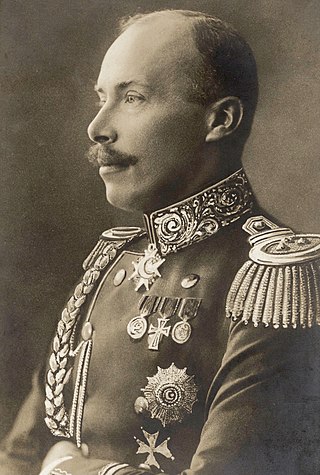
Wilhelm, Prince of Albania was sovereign of the Principality of Albania from 7 March to 3 September 1914. His reign officially came to an end on 31 January 1925, when the country was declared an Albanian Republic.
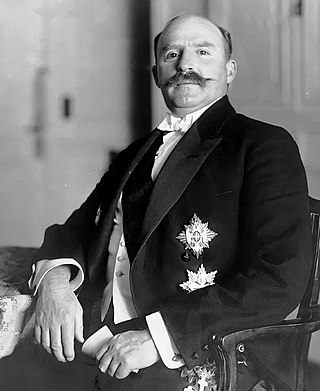
Essad Toptani was an Albanian politician who served as prime minister of Albania from 1914 to 1916. He previously established the Republic of Central Albania based in Durrës. An Ottoman army officer, he served as the Albanian deputy in the Ottoman Parliament and later cooperated with the Balkan League after the Balkan Wars.

Elbasan is the fourth most populous city of Albania and seat of Elbasan County and Elbasan Municipality. It lies to the north of the river Shkumbin between the Skanderbeg Mountains and the Myzeqe Plain in central Albania.

Pogradec is the eleventh most populous city in Albania and the capital of the eponymous municipality. It is located on a narrow plain between two mountain chains along the southwestern banks of the Lake of Ohrid. Its climate is profoundly influenced by a seasonal Mediterranean and Continental climate. The total population is 61,530, of which 20,848 in the municipal unit Pogradec.

The Principality of Albania refers to the short-lived monarchy in Albania, headed by Wilhelm, Prince of Albania, that lasted from the Treaty of London of 1913 which ended the First Balkan War, through the invasions of Albania during World War I and the subsequent disputes over Albanian independence during the Paris Peace Conference of 1919, until 1925, when the monarchy was abolished and the Albanian Republic declared.

Mustafa Merlika-Kruja was one of the signatories of the Albanian Declaration of Independence. He served as Prime Minister of Albania during the Italian occupation from December 4, 1941 to January 19, 1943.

The siege of Scutari, also referred to as the siege of Shkodër, known in Turkish as İşkodra Müdafaası(in Turkish) or İşkodra Savunması, took place from 28 October 1912 to 23 April 1913 when the army of the Kingdom of Montenegro defeated the forces of the Ottoman Empire and invaded Shkodër.
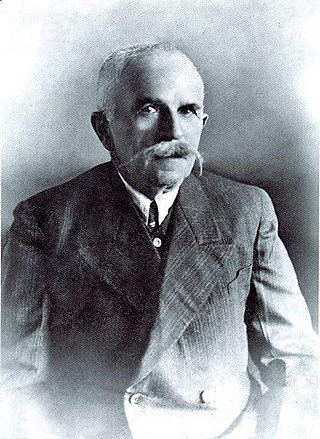
Sali Butka, was an Albanian nationalist figure, revolutionary kachak, poet, and one of the delegates of the city of Korçë to the Albanian National Congress of Lushnjë. He was a well-known leader of an armed çeta band of Albanian fighters during the early 1900's.

The Republic of Central Albania was a short-lived unrecognised state established on 16 October 1913, with its administrative centre in Durrës, today in Albania.

The Autonomous Province of Korçë, sometimes referred to as Republic of Korçë, was an autonomous legal entity established in 27/10 December 1916, by the local French forces after the city of Korçë fell under their control during World War I, and which lasted until 1920.
In World War I, Albania had been an independent state, having gained independence from the Ottoman Empire, on 28 November 1912, following the First Balkan War. It was recognised by the Great Powers as the Principality of Albania, after Turkey officially renounced all its rights in May 1913. Being a fledgling new country, it quickly unravelled and just a few months after taking power, its German ruler, Prince Wilhelm, was forced to flee. After World War I broke out, anarchy took hold of the country as tribes and regions rebelled against central rule. To protect the Greek minority, Greek control was established in the southern districts replacing the Northern Epirote units beginning in October 1914. In response to this, Italy, although officially neutral at the time, also sent troops into the port of Vlorë, while Serbia and Montenegro took control of northern regions. In 1915 Serbia was overrun by combined German, Austro-Hungarian, and Bulgarian forces; the Serbian army retreated across the mountain passes of northern Albania, towards the Adriatic. Italian troops drove the Greeks from southern Albania and brought almost all Albanian territory under their control. Austrian forces invaded in June 1916; Austro-Hungarian forces remained in Albania until the end of the war when a multinational Allied force broke through and pushed them out in 1918.
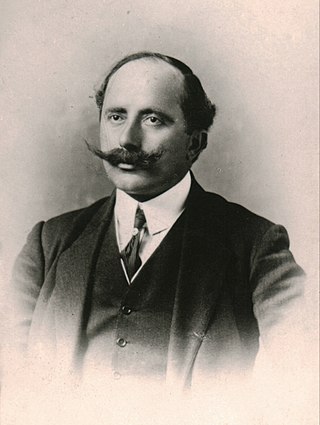
Themistokli Gërmenji was an Albanian nationalist figure and guerrilla fighter. One of the activists of the Albanian National Awakening and the leader of the Albanian irregulars from 1909 to 1914, he became the prefect of police of the Autonomous Albanian Republic of Korçë from 1916 until his execution due to a miscarriage of justice by a French military tribunal in 1917.

The Peasant Revolt, also known as the Muslim uprising, was an uprising of peasants from central Albania, mostly Muslims against the regime of Wilhelm, Prince of Albania during 1914. It was one of the reasons for the prince's withdrawal from the country which marked the fall of the Principality of Albania. The uprising was led by Muslim leaders Haxhi Qamili, Arif Hiqmeti, Musa Qazimi and Mustafa Ndroqi. Along with a demand of total amnesty, the rebels required the return of Albania to the suzerainty of the Sultan of the Ottoman Empire.

The International Gendarmerie was the first law enforcement agency of the Principality of Albania. It was established by the decision of the ambassadors of the six Great Powers that participated in the London Peace Conference. This decision was made on the basis of the London Treaty signed on May 30, 1913. Since most of the members were from the Netherlands, this force was also known as the Dutch Military Mission.

The Great Retreat, also known in Serbian historiography as the Albanian Golgotha, was a strategic withdrawal of the Royal Serbian Army, which marked the end of the Second Serbian campaign of World War I.
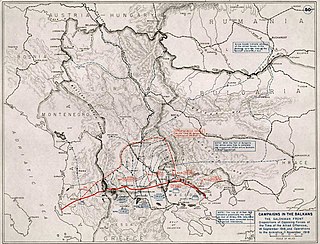
The Liberation of Serbia, Albania and Montenegro was a military action in the Balkans in the final weeks of World War I. Between 29 September and 11 November 1918, the Allied Army of the Orient liberated these three countries from occupation by the Central Powers.

After the 1912 Parliamentary Election, a Caretaker Government had to be formed quickly because of the sudden death of the Prime Minister Milovan Milovanović. Marko Trifković of the People's Radical Party was asked to lead it, because Nikola Pašić, the leader of this party was in Russia at the time. On August 29, Trifković was summoned to the Royal Court by King Peter I, who told him that he has accepted the resignation of the cabinet, and that he had entrusted the formation of the new cabinet to Pašić.
Musa Qazimi was an Albanian teacher, mufti, politician, and Turcophile rebel leader. He was first the mayor (1904-1908), then the mufti (1908-1913), and finally the prefect of Tirana (1913-1914). In the turbulent period after the Albanian declaration of independence from the Ottoman Empire, he was first a supporter of the Young Turks, then of Essad Pasha. After he broke with Essad Pasha, he defected and became a leader in the sectarian, reactionary and clerically-tinged pro-Ottoman revolt against the new Albanian state's authorities. While the official head of the movement was Haxhi Qamili and the head of its armed forces was Mustafa Ndroqi, Qazimi has been considered to be the ideological inspiration of the movement., and the "real leader" of the uprising. After the revolt was shattered by a makeshift alliance consisting of Mirdita Catholics, local resistance, Kosovar Albanians led by Isa Boletini and some foreign volunteers mainly from Romania, he was found guilty of orchestrating the slaughter that occurred during his revolt against supporters of the Albanian national movement as well as Bektashis and Christians, and he was executed on July 7, 1915.

















